Kia Niro vs Mercedes GLB – Differences & prices compared
Compare performance, boot capacity, efficiency and price at a glance.
Find out which car is the better choice for you – Kia Niro or Mercedes GLB?
Costs and Efficiency:
Looking at overall running costs, both models reveal some interesting differences in everyday economy.
Kia Niro has a clearly perceptible advantage in terms of price – it starts at 29100 £, while the Mercedes GLB costs 40500 £. That’s a price difference of around 11375 £.
Fuel consumption also shows a difference: Kia Niro manages with 2.40 L and is therefore clearly more efficient than the Mercedes GLB with 5.60 L. The difference is about 3.20 L per 100 km.
Engine and Performance:
Power, torque and acceleration say a lot about how a car feels on the road. This is where you see which model delivers more driving dynamics.
When it comes to engine power, the Mercedes GLB has a significantly edge – offering 320 HP compared to 180 HP. That’s roughly 140 HP more horsepower.
In acceleration from 0 to 100 km/h, the Mercedes GLB is clearly quicker – completing the sprint in 5.50 s, while the Kia Niro takes 9.90 s. That’s about 4.40 s faster.
In terms of top speed, the Mercedes GLB performs evident better – reaching 250 km/h, while the Kia Niro tops out at 185 km/h. The difference is around 65 km/h.
There’s also a difference in torque: Mercedes GLB pulls clearly perceptible stronger with 400 Nm compared to 265 Nm. That’s about 135 Nm difference.
Space and Everyday Use:
Beyond pure performance, interior space and usability matter most in daily life. This is where you see which car is more practical and versatile.
Both vehicles offer seating for 5 people.
In curb weight, Kia Niro is to a small extent lighter – 1474 kg compared to 1640 kg. The difference is around 166 kg.
In terms of boot space, the Mercedes GLB offers noticeable more room – 570 L compared to 451 L. That’s a difference of about 119 L.
In maximum load capacity, the Mercedes GLB performs slightly better – up to 1805 L, which is about 360 L more than the Kia Niro.
When it comes to payload, Mercedes GLB hardly perceptible takes the win – 500 kg compared to 466 kg. That’s a difference of about 34 kg.
Who wins the race?
The Kia Niro proves to be wins by a narrow margin and therefore becomes our DriveDuel Champion!
Kia Niro is the better all-rounder in this comparison.
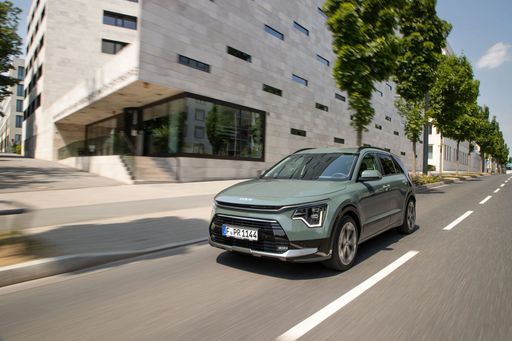
Kia Niro
Kia Niro
The Kia Niro presents itself as a versatile and eco-friendly SUV, blending a stylish design with advanced hybrid technology. Its spacious interior offers comfort and practicality, making it ideal for both city driving and longer journeys. With a focus on efficiency and sustainability, the Niro is a compelling choice for environmentally conscious drivers.
details @ press.kia.com
@ press.kia.com
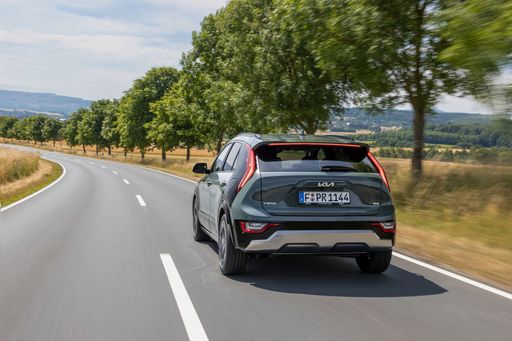 @ press.kia.com
@ press.kia.com
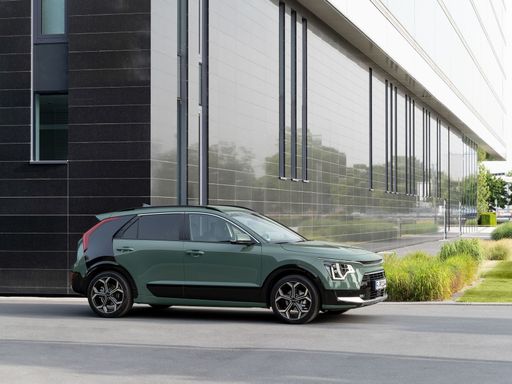 @ press.kia.com
@ press.kia.com
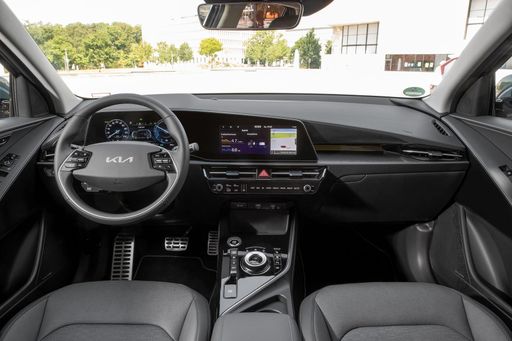 @ press.kia.com
@ press.kia.com
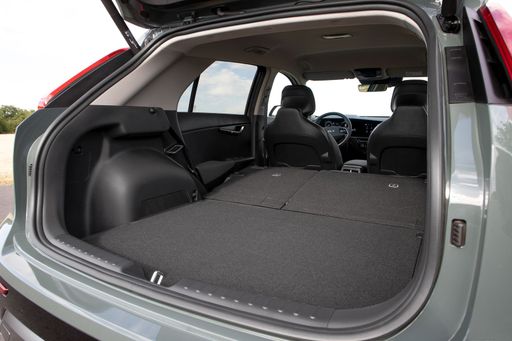 @ press.kia.com
@ press.kia.com
Mercedes GLB
The Mercedes-Benz GLB exudes a robust yet sophisticated presence, combining the versatility of an SUV with the elegance the brand is renowned for. Its spacious interior is thoughtfully designed to accommodate modern lifestyles, offering flexibility and comfort for both drivers and passengers. With advanced technology seamlessly integrated throughout, the GLB ensures a driving experience that is both dynamic and intuitive.
details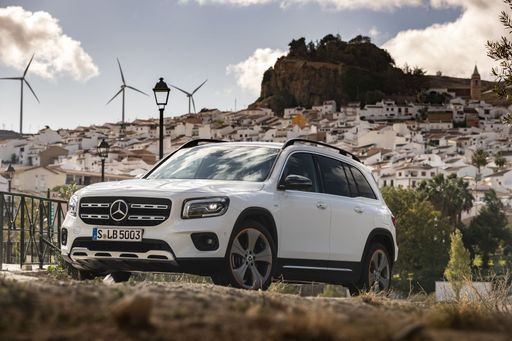 @ group-media.mercedes-benz.com
@ group-media.mercedes-benz.com
 @ group-media.mercedes-benz.com
@ group-media.mercedes-benz.com
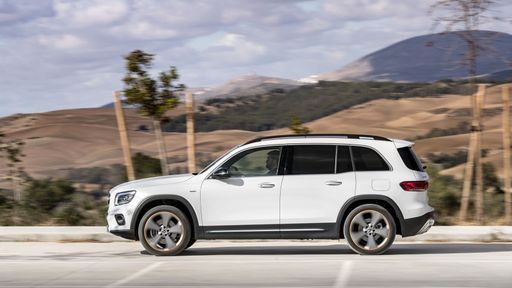 @ group-media.mercedes-benz.com
@ group-media.mercedes-benz.com
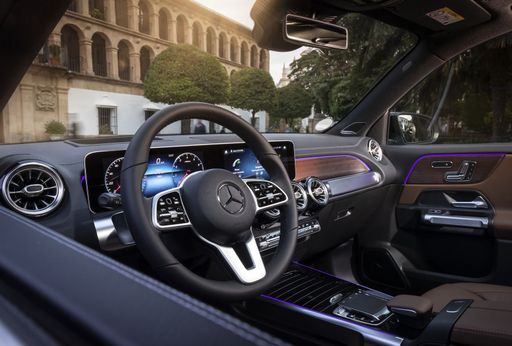 @ group-media.mercedes-benz.com
@ group-media.mercedes-benz.com
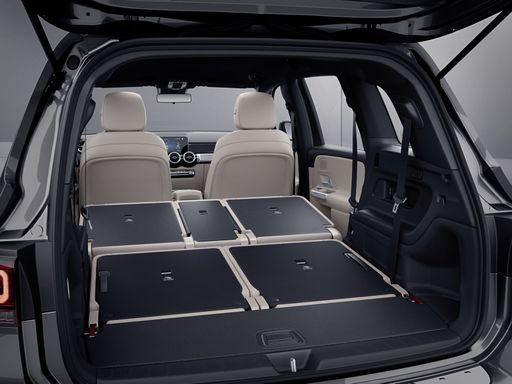 @ group-media.mercedes-benz.com
@ group-media.mercedes-benz.com

|

|
|
|
|
Costs and Consumption |
|
|---|---|
|
Price
29100 - 38600 £
|
Price
40500 - 65300 £
|
|
Consumption L/100km
2.4 - 4.9 L
|
Consumption L/100km
5.6 - 9 L
|
|
Consumption kWh/100km
-
|
Consumption kWh/100km
-
|
|
Electric Range
57 - 62 km
|
Electric Range
-
|
|
Battery Capacity
1.3 - 11.1 kWh
|
Battery Capacity
-
|
|
co2
53 - 111 g/km
|
co2
146 - 204 g/km
|
|
Fuel tank capacity
37 - 42 L
|
Fuel tank capacity
52 - 60 L
|
Dimensions and Body |
|
|---|---|
|
Body Type
SUV
|
Body Type
SUV
|
|
Seats
5
|
Seats
5
|
|
Doors
5
|
Doors
5
|
|
Curb weight
1474 - 1594 kg
|
Curb weight
1640 - 1820 kg
|
|
Trunk capacity
348 - 451 L
|
Trunk capacity
565 - 570 L
|
|
Length
4420 mm
|
Length
4634 - 4650 mm
|
|
Width
1825 mm
|
Width
1834 - 1850 mm
|
|
Height
1545 mm
|
Height
1665 - 1692 mm
|
|
Max trunk capacity
1342 - 1445 L
|
Max trunk capacity
1800 - 1805 L
|
|
Payload
466 kg
|
Payload
500 kg
|
Engine and Performance |
|
|---|---|
|
Engine Type
Full Hybrid, Plugin Hybrid
|
Engine Type
Petrol MHEV, Diesel
|
|
Transmission
Automatic
|
Transmission
Automatic
|
|
Transmission Detail
Dual-Clutch Automatic
|
Transmission Detail
Dual-Clutch Automatic
|
|
Drive Type
Front-Wheel Drive
|
Drive Type
Front-Wheel Drive, All-Wheel Drive
|
|
Power HP
138 - 180 HP
|
Power HP
116 - 320 HP
|
|
Acceleration 0-100km/h
9.9 - 11.4 s
|
Acceleration 0-100km/h
5.5 - 11.5 s
|
|
Max Speed
170 - 185 km/h
|
Max Speed
188 - 250 km/h
|
|
Torque
265 Nm
|
Torque
230 - 400 Nm
|
|
Number of Cylinders
4
|
Number of Cylinders
4
|
|
Power kW
102 - 132 kW
|
Power kW
85 - 235 kW
|
|
Engine capacity
1580 cm3
|
Engine capacity
1332 - 1991 cm3
|
General |
|
|---|---|
|
Model Year
2025
|
Model Year
2025
|
|
CO2 Efficiency Class
C, B
|
CO2 Efficiency Class
E, F, G
|
|
Brand
Kia
|
Brand
Mercedes-Benz
|
Is the Kia Niro offered with different drivetrains?
The Kia Niro is available as Front-Wheel Drive.
The prices and data displayed are estimates based on German list prices and may vary by country. This information is not legally binding.
